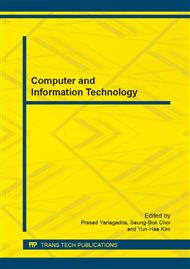p.458
p.462
p.469
p.473
p.477
p.485
p.491
p.496
p.500
The Research of 3D Mouth Animation Synthesis Driven by Continuous Chinese Text Based on Mpeg-4
Abstract:
A 3D human facial model was made based on the MPEG-4 standard. A method of synthesis of mouth animation based on a entire Chinese sentence was put forward, according to the influence of Chinese pronunciation rules such as co-articulation sufficiently. The method computes the extent of influence between current phoneme and the one next to it, and constructs the continuous mouth-shape sequence. Then filter the phoneme which has little effect on the last and the next one when pronouncing continuously. The 3D facial model was driven to synthesize smooth and realistic animation. After the experiments, it is proved that the method has a good versatility and reliability, which can be used on different kinds of 3D models. At the same time, the method can effectively improve the problem of co-articulation in continuous Chinese pronunciation, which makes the synthesis of mouth animation more smooth, more fluent, and more close to real pronunciation of people.
Info:
Periodical:
Pages:
477-484
Citation:
Online since:
February 2014
Authors:
Price:
Сopyright:
© 2014 Trans Tech Publications Ltd. All Rights Reserved
Share:
Citation:


